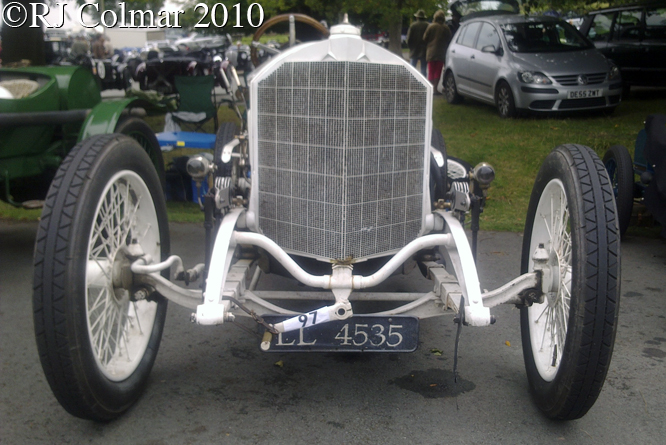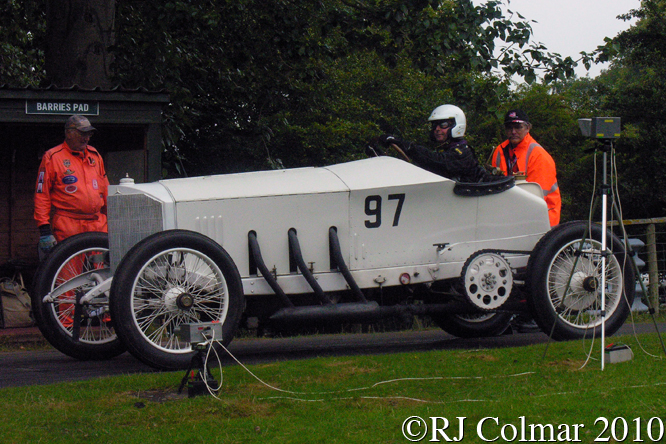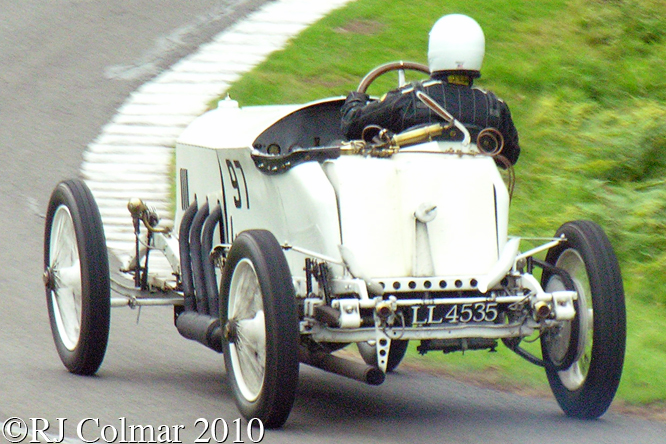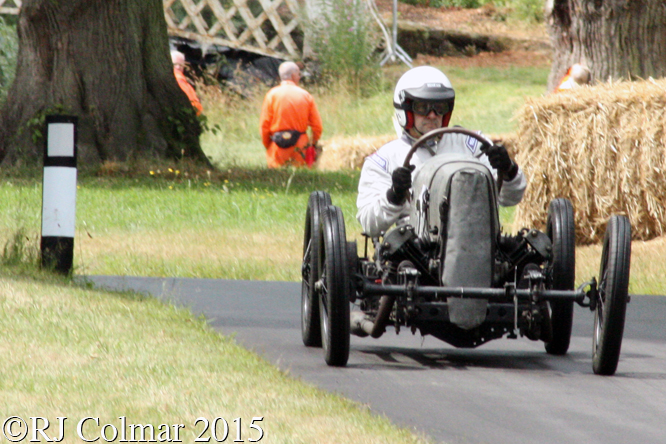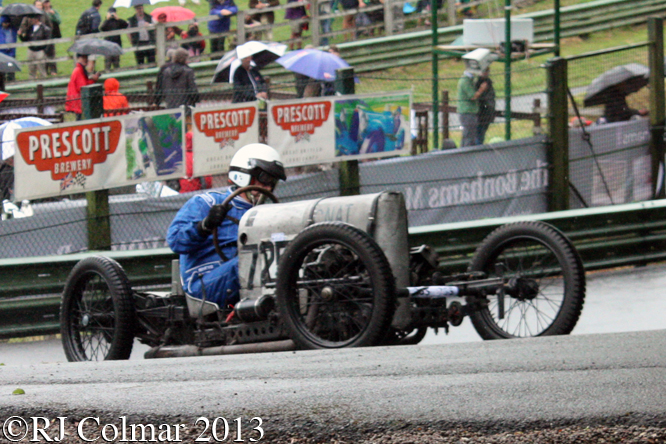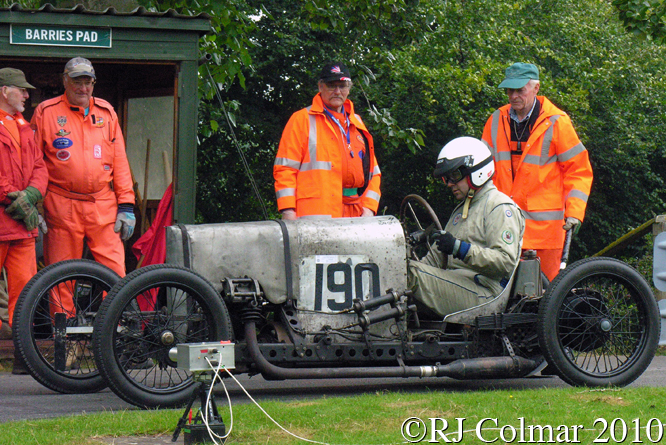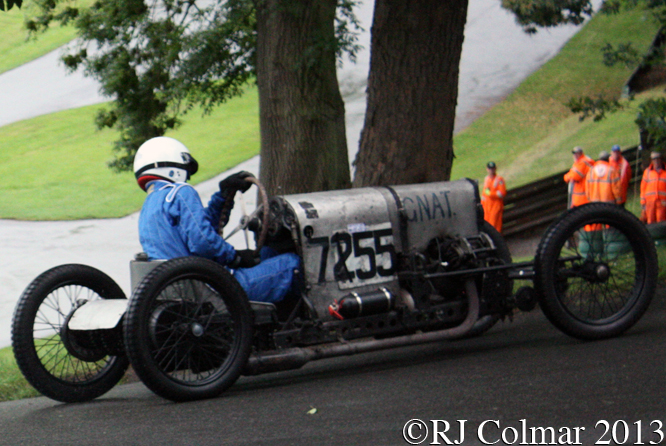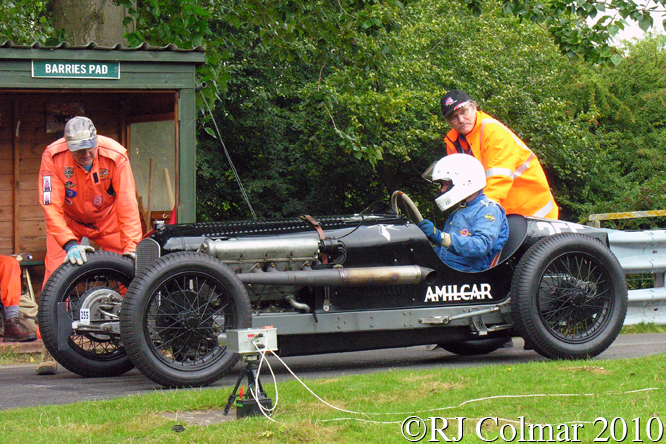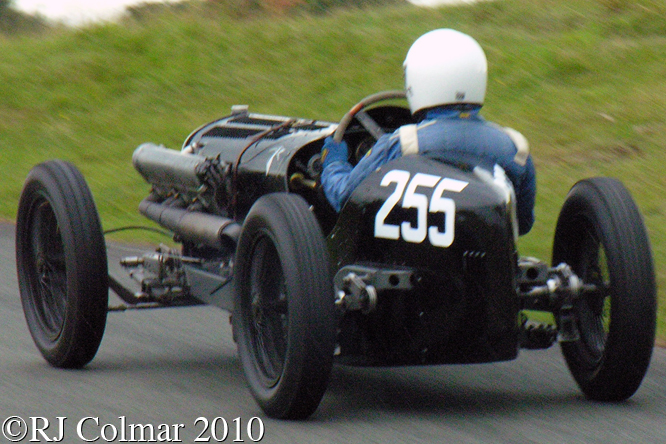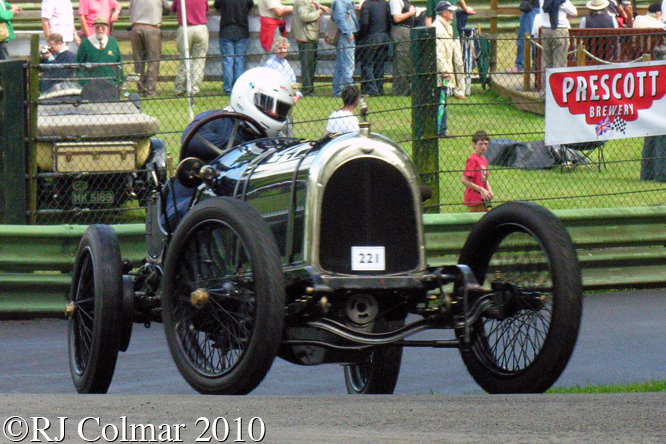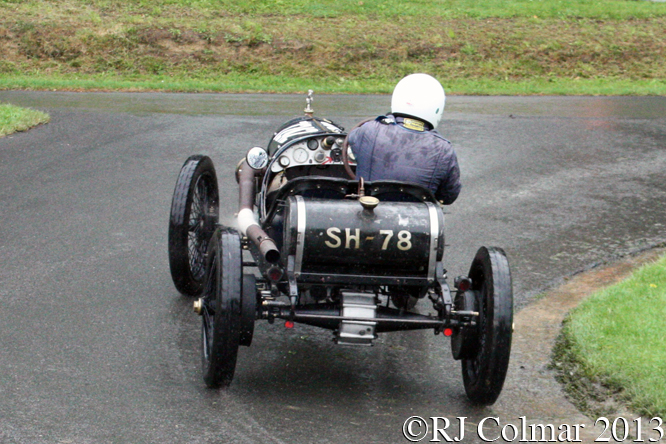Today’s featured Spider was inspired by Capt. Archie Fraser Nash’s successful GN hill climber known a “Kim”.
Spider was built by Basil Davenport who bought a GN chassis from the Captain which he then shortened and converted to a single seater with central steering and fitted a Kim inspired body built from chalk drawings on his workshop floor in 1924.
For 1925 Basil replaced the prototype GN Vitesse 1087cc / 66 cui V twin engine he had originally bought with the chassis for the unique 1500 cc / 91.5 cui V twin with four valve aluminium bronze heads and twin spark plugs from the works GN racer known at Mowgli that had lapped Brooklands at 92 mph.
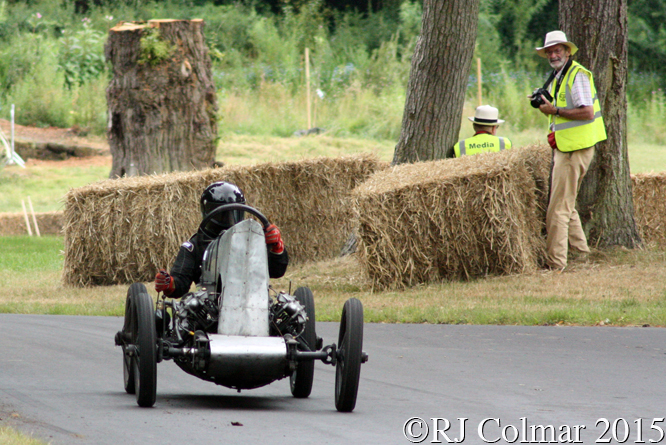
After fitting lighter pistons and stronger JAP connecting rods Basil turned up at Shelsley Walsh on September the 4th 1926 and became the first man to climb the hill in under 50 seconds.
Further modifications for 1927 including lighter valves and new cam shafts made the car quicker but the engine blew at Colwyn Bay leaving Basil just five weeks to build a new crankcase and motor before Shelsley.
The new crankcase allowed one cylinder to be mounted slightly ahead of the other for added reliability of the connecting rods and the engine compression was raised so the 40mm Solex Carburettors could now feed the engine with an alcohol fuel mixture.
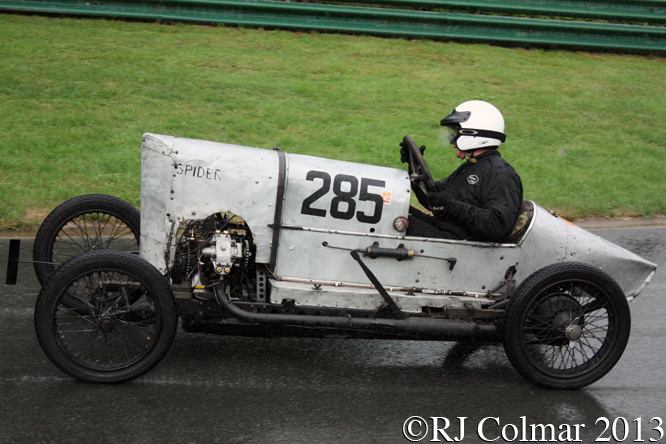
At Shelsley in 1927 Basil knocked another second of his record, despite the rain !
The following season Basil left the Shelsley record at 46.4 seconds and it was not until 1929 that Raymond Mays driving a 3 litre / 183 cui supercharged Villiers relieved Basil of the Shelsley record.
In 1930 Basil proved to be quicker up Shelsley that none other than Rudolf Caracciola driving a supercharged 7 litre / 427 cui Mercedes Benz SSK.

At the same meeting his temporary 44.6 second record eventually fell to Hans Stuck who drove his 3.5 litre / 213 cui Austro Daimler to a new record of 42.8 seconds leaving Basil and the Spider in second place.
There after Basil fitted new heads to the car and even front wheel brakes, but these did not help make the car any quicker and he retired to look after his business interests in 1931.
In 1946 Basil brought Spider briefly out of retirement to set the best unsupercharged time at Shelsley but elected to cannibalise Spider particularly of it’s body, held on by six bolts and chain drive transmission for the 2 litre / 122 cui Big Spider.

While still at school in 1979 David Leigh started helping Basil rebuild the original Spider.
After Basil’s death David bought bought Spider from Basil’s longstanding mechanic Ron Sant in 1994.
Three years later David managed to drive Spider up Shelsley in under 40 seconds which had been Basil’s dream since breaking the 50 second record in 1926.

David modestly credits the achievement to the improvements in the track surface and latest Avon GP motorcycle tyres which sit on period correct size 19 inch rims.
David Leigh is seen at the wheel, recovered from a Handley Page bomber, of Spider in the 2013 photographs taken at Prescott.
At Chateau Impeney Charlie Martin, better known for driving the Morgan RIP Special became only the third person to drive Spider as seen in the above 2015 dated photographs.
My thanks to Tim Murray for kindly lending me his copy of John Bolsters “Specials” 1971 edition with out which this blog would be very brief.
Thanks for joining me on this “Shelsley Giant Killer” edition of “Gettin’ a li’l psycho on tyres” I hope you will join me again tomorrow when I’ll be looking at another ERA. Don’t forget to come back now !


